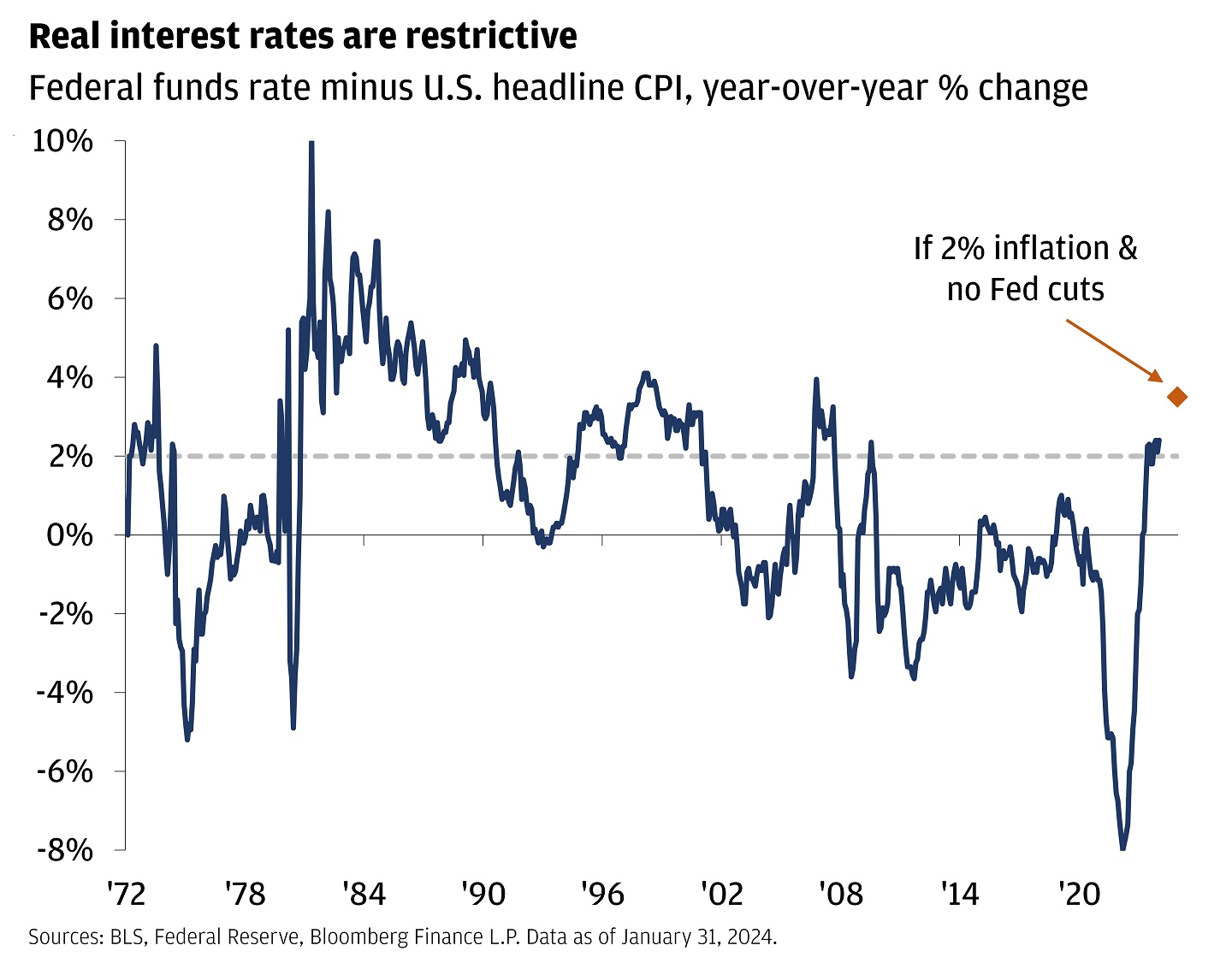We’ve already seen shipping costs spike, and some companies have been citing supply chain worries in their earnings calls.
However, context is important. Disruptions in the Red Sea just make trade more difficult, with container ships circumnavigating around Africa rather than through the Suez Canal – far from a complete stop like during the pandemic. That’s meant that while shipping costs have spiked, they remain more than 60% below their 2020 highs.
The pressure we are feeling also may abate soon. Consider what we heard this week from shipping giant Maersk, often viewed as a barometer for global trade. While it acknowledged the uncertainty around the situation, it also noted that more new vessels were on their way to market than needed to send ships around Africa instead, cushioning the impact of longer expected journey times and higher freight rates.
Finally, we anticipate little impact on inflation as it is. Goods account for just about one-third of U.S. PCE (the Fed’s preferred gauge of inflation) – and only about one-third of that can also be traced to imports. Moreover, only 4% of the cargo through the Suez Canal is traveling to America, compared to about 40% for Europe and about 30% for Asia.

